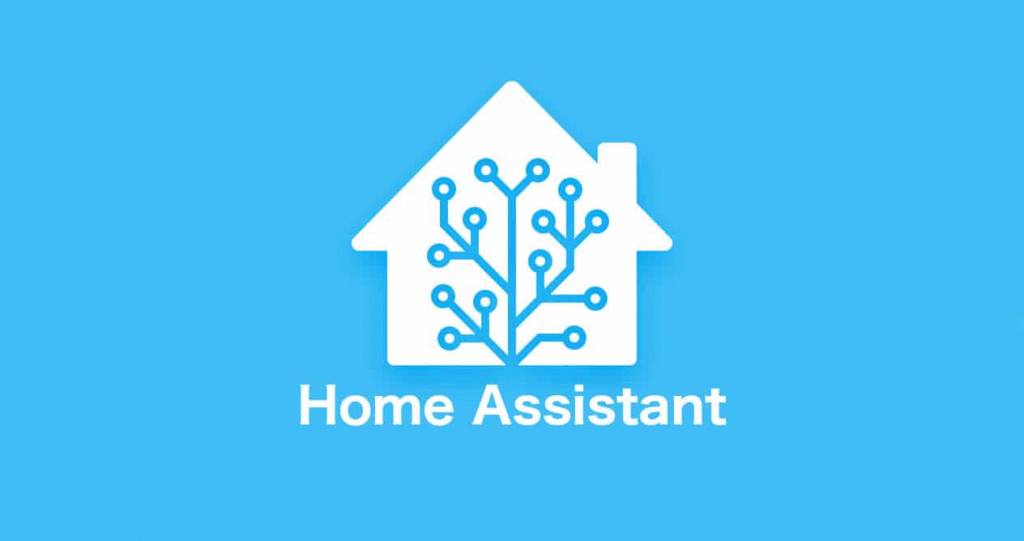
Home Assistant has become the go-to platform for home automation enthusiasts, offering powerful local control of smart devices without relying on cloud services. Running it on a Raspberry Pi provides an affordable, energy-efficient solution that can handle most home automation needs. This comprehensive guide will walk you through every step of the installation and initial configuration process.
What You’ll Need
Before diving into the installation, gather these essential components:
Hardware Requirements:
- Raspberry Pi 4 (4GB RAM recommended, though 2GB works for smaller setups)
- High-quality microSD card (32GB minimum, Class 10 or better)
- Reliable power supply (official Raspberry Pi power adapter recommended)
- Ethernet cable for initial setup
- Case with adequate ventilation
- Optional: USB SSD for better performance and longevity
Software Requirements:
- Raspberry Pi Imager
- Computer with SD card reader
- Basic networking knowledge
The Raspberry Pi 4 with 4GB RAM strikes the perfect balance between performance and cost. While you can use older models, the Pi 4’s improved processing power and memory make it significantly more responsive when running Home Assistant with multiple integrations.
Installation Methods
Home Assistant offers several installation approaches, each with distinct advantages:
Home Assistant Operating System (Recommended) This method provides the most streamlined experience. HAOS is a complete operating system designed specifically for Home Assistant, including the Supervisor for easy add-on management, automatic updates, and system maintenance tools. This approach is ideal for users who want a dedicated Home Assistant device without worrying about underlying system management.
Container Installation If you prefer more control over the underlying system or want to run other services alongside Home Assistant, Docker containers offer flexibility while maintaining most HAOS benefits. This method requires more technical knowledge but provides greater customization options.
Core Installation Advanced users who want complete control can install Home Assistant Core directly on a standard Linux distribution. This method requires manual management of dependencies and updates but offers maximum flexibility.
For this guide, we’ll focus on the HAOS method as it provides the best balance of functionality and ease of use.
Step-by-Step Installation Process
Preparing the SD Card
Start by downloading the official Raspberry Pi Imager from the Raspberry Pi Foundation website. This tool simplifies the process of writing operating system images to SD cards while providing essential configuration options.
Insert your microSD card into your computer and launch the Raspberry Pi Imager. Click “Choose OS” and scroll down to find “Home Assistant and Automation.” Select “Home Assistant” from the list, which will download the latest HAOS image.
Before writing the image, click the gear icon to access advanced options. Here you can enable SSH access, configure WiFi credentials, and set up user accounts. While Home Assistant will primarily use a web interface, having SSH access can be valuable for troubleshooting and advanced configuration.
Configure your WiFi settings if you don’t plan to use Ethernet initially, though Ethernet is recommended for the initial setup due to its reliability. Set a username and password for system access, even though you’ll primarily interact with Home Assistant through its web interface.
First Boot and Initial Configuration
Insert the prepared SD card into your Raspberry Pi and connect it to your network via Ethernet. Power on the device and wait patiently for the initial boot process, which can take 10-20 minutes as the system downloads and installs the latest Home Assistant version.
The system will automatically configure itself and start the Home Assistant service. You can monitor the progress by connecting a monitor to the Pi, though it’s not necessary for normal operation.
Accessing Home Assistant
Once the boot process completes, Home Assistant will be accessible through your web browser. Find your Raspberry Pi’s IP address either through your router’s admin panel or by using network scanning tools. Navigate to http://[PI-IP-ADDRESS]:8123 in your web browser.
The initial setup wizard will guide you through creating your first user account, naming your home, setting your location, and configuring basic preferences. Take care when setting your location, as this affects weather integrations, sun position calculations, and other location-dependent features.
Essential Configuration Steps
After completing the initial wizard, spend time exploring the Home Assistant interface. The main dashboard provides an overview of your system, while the Configuration panel offers access to integrations, automations, and system settings.
Enable automatic updates in the Supervisor panel to ensure your system stays current with security patches and feature improvements. Home Assistant releases updates monthly, and the Supervisor makes applying these updates straightforward.
Configure your network settings properly, especially if you plan to access Home Assistant remotely. Consider setting up a static IP address for your Raspberry Pi to ensure consistent access.
Optimizing Performance
Storage Considerations
While microSD cards work for Home Assistant, they can become a bottleneck over time due to frequent database writes. Home Assistant maintains detailed logs and state history, which can wear out SD cards and slow system performance.
Consider migrating to a USB SSD after your initial setup is working. This upgrade significantly improves system responsiveness and provides better long-term reliability. The process involves backing up your configuration, writing the HAOS image to the SSD, and restoring your settings.
Memory and Processing
Monitor your system’s resource usage through the Supervisor panel. If you notice high memory usage or slow response times, consider disabling unnecessary integrations or reducing the history retention period in your configuration.
The default history retention period is 10 days, but you can adjust this based on your needs and available storage. Shorter retention periods reduce database size and improve performance.
Network Optimization
Ensure your Raspberry Pi has a strong, stable network connection. WiFi can work but may introduce latency and reliability issues, especially in homes with many smart devices competing for bandwidth.
If using WiFi, position your Pi near your router or consider using a WiFi extender to ensure strong signal strength. Monitor connection quality through the system information panel.
Essential Add-ons and Integrations
File Editor Add-on
Install the File Editor add-on to modify configuration files directly through the web interface. This tool eliminates the need for SSH access for basic configuration changes and provides syntax highlighting for YAML files.
Terminal & SSH
Even with the graphical interface, command-line access proves valuable for troubleshooting and advanced configuration. Install the Terminal & SSH add-on to access the underlying system when needed.
Popular Integrations
Start with integrations for devices you already own. Home Assistant supports thousands of devices and services, from smart lights and thermostats to weather services and media players.
Common first integrations include weather services for your location, mobile app integration for device tracking and notifications, and any smart devices you want to control.
Security Best Practices
Network Security
Change default passwords immediately and use strong, unique credentials for all accounts. Enable two-factor authentication if you plan to access Home Assistant remotely.
If remote access is needed, avoid exposing your Home Assistant instance directly to the internet. Instead, use VPN access or Home Assistant Cloud for secure remote connectivity.
Regular Backups
Configure automatic backups through the Supervisor panel. These snapshots include your complete configuration, automation rules, and system settings. Store backups both locally and in cloud storage for redundancy.
Test your backup restoration process periodically to ensure you can recover from hardware failures or configuration mistakes.
Updates and Maintenance
Keep your system updated with the latest Home Assistant releases and add-on updates. The Supervisor notification system will alert you to available updates, and you can configure automatic updates for add-ons.
Monitor system logs regularly for errors or warnings that might indicate problems. The logs panel provides detailed information about system operation and can help identify issues before they become serious problems.
Troubleshooting Common Issues
Boot Problems
If your Raspberry Pi doesn’t boot properly, first check the power supply. Many issues stem from inadequate power delivery, especially when using cheap or worn-out power adapters.
Verify that your SD card is properly written and not corrupted. Re-imaging the card often resolves boot issues caused by incomplete installations or corrupted files.
Network Connectivity
If you can’t access the Home Assistant web interface, verify that your Pi is connected to the network and has received an IP address. Check your router’s connected devices list or use network scanning tools to locate the device.
Ensure that your firewall isn’t blocking port 8123, which Home Assistant uses for web access. Some routers have built-in security features that might interfere with local device communication.
Performance Issues
Slow response times often indicate storage bottlenecks or insufficient memory. Monitor resource usage through the system information panel and consider upgrading to an SSD or adding more RAM if using a Pi with limited memory.
Database corruption can also cause performance problems. Home Assistant includes tools for checking and repairing the database, accessible through the developer tools panel.
Advanced Configuration Tips
YAML Configuration
While Home Assistant’s graphical interface handles most configuration tasks, understanding YAML syntax enables advanced customization. The configuration.yaml file controls system-wide settings and can define complex automation rules and custom integrations.
Start with simple YAML modifications and gradually build complexity as you become comfortable with the syntax. The Home Assistant documentation provides extensive examples and best practices for YAML configuration.
Custom Automations
Begin with simple automations like turning lights on at sunset or sending notifications for specific events. Home Assistant’s automation editor provides a graphical interface for creating rules, but YAML configuration offers more advanced options.
Test automations thoroughly in a safe environment before enabling them for critical systems like security or HVAC control.
Integration Development
Home Assistant’s open architecture allows for custom integrations and components. If you have programming experience, you can develop custom integrations for unsupported devices or create specialized functionality for your specific needs.
The Home Assistant developer documentation provides guidance for creating custom components and contributing to the project.
Expanding Your Setup
Additional Hardware
As your home automation system grows, consider adding specialized hardware like Zigbee or Z-Wave coordinators for mesh networking protocols. These additions expand device compatibility and often provide more reliable communication than WiFi-based devices.
USB extension cables can help position radio coordinators away from interference sources like the Raspberry Pi itself or nearby electronics.
Multi-Room Audio
Home Assistant integrates well with multi-room audio systems like Snapcast or Music Assistant. These systems can turn your home automation hub into a comprehensive entertainment control center.
Presence Detection
Implement multiple presence detection methods for reliable automation triggers. Combine GPS-based mobile app tracking with network device detection and possibly Bluetooth beacons for accurate home/away detection.
Voice Control
Integrate voice assistants like Mycroft or Rhasspy for local voice control without cloud dependencies. These systems can provide privacy-focused voice automation that works entirely within your local network.
Conclusion
Running Home Assistant on a Raspberry Pi creates a powerful, flexible foundation for home automation that grows with your needs. The initial setup requires patience and attention to detail, but the result is a capable system that provides years of reliable service. Regular maintenance, security practices, and gradual expansion will help you build a comprehensive home automation system tailored to your specific requirements.
The key to success lies in starting simple and building complexity gradually. Begin with basic device control and monitoring, then expand into advanced automations and integrations as you become more comfortable with the platform. The Home Assistant community provides extensive documentation, examples, and support to help you along the journey from basic setup to advanced home automation mastery.
